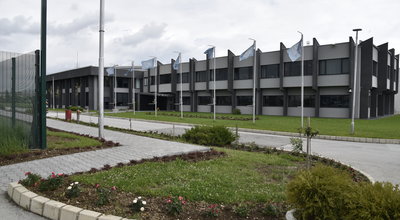There is no a single state institution which systematically monitors consequences of Nato bombardment with regards to populations’ health. Territory of Kosovo was never decontaminated, what has an impact on other parts of Serbia.
Problems referring to populations’ health, which are the consequence of Nato bombing are neither monitored nor analyzed systematically by anyone in Serbia, even though the number of diseases which could be brought into relation with the use of depleted uranium is in the rise. Process of monitoring of health of members of the police and army who were located in vulnerable regions was abolished back in 2003, and never continued.
This problems was highlighted by the retired general Slobodan Petković, specialist for atomic-biological-chemical defense, who investigated consequences of the use of depleted uranium, even during the conflict. He is also and the co-author of the book ‘Crime in the war, genocide in peace’.
“At that time we found out that some changes were registered with some individuals and members of their families, but considering the long latent period for the start of radiation traumas, long-term monitoring is needed. I don’t understand why it was stopped at that time,” asks Petković.
He explained that on our territory ammunition with the depleted uranium was fired by American planes A-10, while first attacks took place in broad region of Prizren on 28 and 30 March 1999. Later, it was used in 112 attacks at 91 locations, leaving behind several tons of radioactive dump. Total amount of projectiles with the depleted uranium is 31.000.
Petković claims that certain international organizations, under the influence of the US, tried to relativize consequences on health and hush up heavy consequences of the use of ammunition with the depleted uranium. Facts on threats from using such ammunition were hidden from the public, while in Kosovo and Metohija it was also hidden from local population. However, soldiers and members of international missions in Kosovo warned on threats they were exposed to. In a handbook signed by Colonel Osvaldo Bizzari soldiers, amongst the other things, are warned to stay away from tanks, vehicles and buildings hit with the projectiles with uranium because inhalation of the uranium dust is related with health problems, including cancer and deformations of newborns.
“With the use of ammunition with depleted uranium Nato has caused significant long-term and dangerous chemical and radioactive pollution of the environment in our country, while normal and safe living is brought unto question in certain regions,” said Petković. “It is evident that diseases which could be brought into connection with the consequences of bombardment are in the rise. What we did so far, as a state, with regards to revealing the truth on the consequences of the use of ammunition with the depleted uranium shows that for 15 years now, we didn’t have the strength, political will of courage to face the truth.
General Petković stressed that territory of Kosovo and Metohija was never decontaminated and that it affects other parts of Serbia, because it is about watercourse which goes through Serbia proper too. Experts confirmed that in ammunition, which was ‘poured’ over Serbia during 78 days of bombardment, also contained and very dangerous plutonium.
“During 1999 the UNEP has set a Balkan task force (BTF) which was due to produce a final report on ecological consequences of the bombardment, with Pekka Haavisto at the helm of the BTF, former minister for ecology of Finland, who dwelled in our institute during his investigation,” reveals Dr Radomir Kovačević to Novosti, who works in the Institute for Medicine at Work ‘Dr Dragomir Karajović”. Only in the report of Haavisto’s task force, and never again, it was mentioned that in several locations in Kosovo and Metohija which were bombarded with projectiles with the depleted uranium, the plutonium was found as well. Haavisto’s task force latter published in 16 February 2001, that uranium thrown in Kosovo was actually ‘dirty’ uranium, the most dangerous element for human beings and the environment. They published that they analyzed 340 samples of soil and water which proved the presence of trans-uranium element, uranium 236, and traces of plutonium and processes of fission. Moreover, presence of plutonium was confirmed by the Swedish Institute for Radiological Protection and Swiss ‘Spitz Laboratory’ in Spitz, in charge for protection of population from nuclear, biological and chemical pollution. Presence of highly toxic plutonium could not be denied even by than director of the UNEP Klaus Topfer.
In the UNEP report, compiled during the bombardment, the danger was mentioned not only from the consequences from depleted uranium, which was spread throughout territory of Serbia, but from other substances as well, which have been released during the bombardment. Amongst the most toxic ones are poly-chloric-biphenyls (PCB), which were released in the environment after oil-refinery in Pancevo, railways, power substations…were hit. Report brings that those substances have polluted rivers and soil, while one liter of PCB is sufficient to poison a billion liters of water.
Researches on the ground after bombardment
URANIUM
Radio-active elements are most dangerous in direct contact, that is, the one who would inhale uranium dust would most probably get leukemia. When those dangerous materials end up in soil or water, their toxicity is reduced by the time, however it doesn’t disappear. Influence of radiation on the rise of solid tumors could be measured only after 15 or 20 year. Since the half-life of uranium is 4,5 billion years, consequences of Nato bombardment can’t be completely removed.
TRACES UNDER THE SOIL
According to data provided by general Petković, at nine locations in southern Serbia in 12 attacks, somewhere between 5.000 and 10.000 projectiles with depleted uranium were fired. Projectiles which were found in depth of one meter in the soil were removed, however it is not known how much ammunition is left deeper in the ground. Only on the territory of Pljačkovica near Vranje, around 1.000 radio-active bullets were fired. Military and experts from the Institute ‘Vinča’, have officially gathered 92 uranium projectiles and 126 covers.












